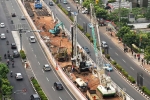
Mining in Indonesia: Investment, Taxation and Regulatory Guide – 14th Edition
This fourteenth edition of the guide aims to help investors navigate the Indonesian mining investment landscape, drive industry growth, and support sustainability and energy transition efforts. Reflecting regulations issued up to 31 December 2024, this publication focuses on the latest tax, regulatory, and commercial changes since our previous edition.

























